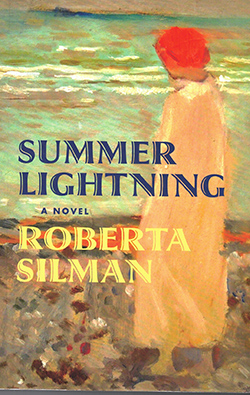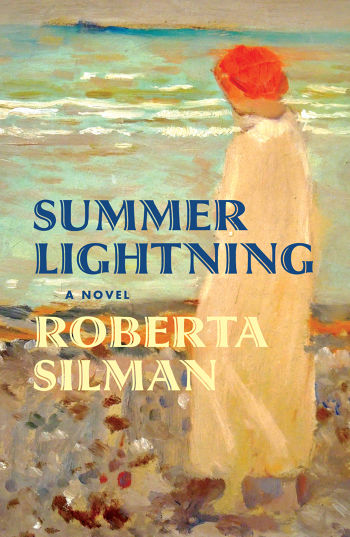Summer Lightning by Roberta Silman, Great Barrington, Mass.: Campden Hill Books; ISBN 97998985-926002; 317 pages; $15.

 SAN DIEGO –This novel follows a Jewish family through nearly four decades of American history, starting with the couple’s chance meeting at Roosevelt Field on May 20, 1927, while watching Charles Lindbergh begin his solo flight across the Atlantic, and extending through the assassination of John F. Kennedy on November 22, 1963.
SAN DIEGO –This novel follows a Jewish family through nearly four decades of American history, starting with the couple’s chance meeting at Roosevelt Field on May 20, 1927, while watching Charles Lindbergh begin his solo flight across the Atlantic, and extending through the assassination of John F. Kennedy on November 22, 1963.
Seeing Lindbergh’s flight was the impetus of the relationship between Belle and Isaac Kaprow — one of the quirky ways in which history and fiction mingle in this book that takes a liberal Democratic view of U.S. politics and shares with us insights into the lives of nonconformist visual artists.
Lindbergh, after the kidnaping and murder of his and Anne Morrow’s baby by Bruno Hauptmann, became enamored of Adolf Hitler and the German Nazi party. He became active in the America First movement, which sought to influence U.S. policy in favor of Germany and, failing that, to keep America out of World War II. The regime that Lindbergh supported was, of course, responsible for the Holocaust, which claimed the life in Lithuania of Isaac’s older brother.
Isaac had immigrated five years before the Lindbergh flight to the United States. He and his friend Jules made the transatlantic crossing. Jules, something of an entrepreneur, invested in apartment buildings, which because they were not up to code, rented at rates that even struggling artists could afford. He asked Belle to collect rents for him, thus introducing her to the Bohemian lifestyle of various painters and illustrators, which she watched with both fascination and revulsion.
Isaac and Belle had two daughters, Sophy and Vivie. Carrie, an African-American housekeeper, helped bring them up, her relationship to the Kaprows so close that she was more a part of the family than an employee. While keeping tab on the parents, the novel also follows the two girls through school, college, and marriage –Sophy’s more conventional than Vivie’s, who fell in love with an African-American during the height of the Civil Rights Movement.
Within the scope of this story are passages about art, music, lifestyles, and escapes to suburbia that characterized the mid-20th century. It is an easy, often charming read, that will provide insights to the post millennial generations about what came before them. For those who lived through the described eras, the novel may occasion quite a bit of nostalgia.


























